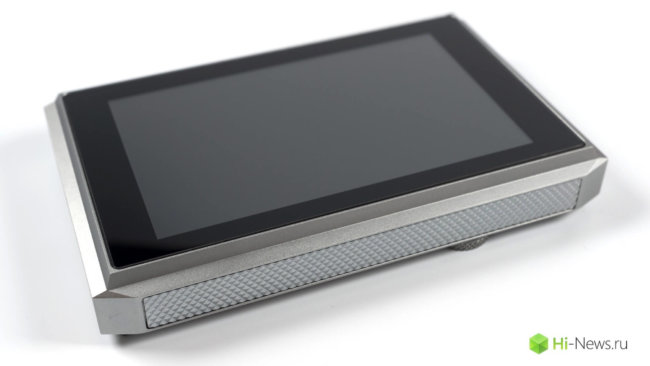
It seems that the Koreans from theBit already came down from the mountain and, like the bulls of the popular joke, do something. Starting with a relatively simple but interesting OPUS#1 and continuing in the present flagship “top” OPUS#2, they did not rest on its laurels and has rolled out a model especially interesting because it goes against the current trends, calling it OPUS#3. Of course, this will be it.
While the industry is in full settles AKM-ovskie chips, only interrupted by the new model ESS, theBit decided that it would be corny, and remembered the wonderful and loved by many PCM1792 chip from Burr-Brown. This DAC has added traditional Android well customized, high-quality, though not particularly powerful amplifier and Packed in an interesting case. New decided to position somewhere between the two previous models and made her price of $ 900 (however, traditionally, the probable discounts), what is interesting will offer this player buyers?
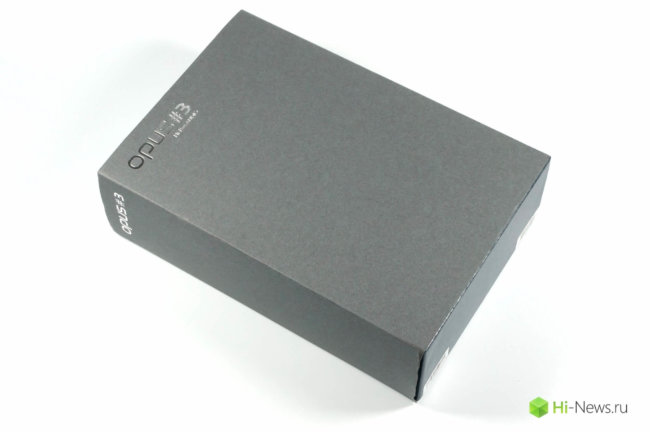
Specifications
- Processor: 4-core ARM Cortex-A9 1.4 GHz
- RAM: 1 GB DDR3
- DAC: Burr-Brown PCM1792A
- Frequency range: 20 Hz – 20 kHz (±0,026 dB) 10 Hz – 70 kHz (±0,3 dB) — both exits
- The ratio signal-to-noise ratio: 114 dB @ 1 kHz both outputs
- Channel separation: 130dB @ 1kHz — a common output 135 dB @ 1 kHz balanced
- Total harmonic distortion + noise: 0,0009% @ 1 kHz
- Output level (no load): 2.5 Vrms — normal exit, 3Vrms — balanced
- Output impedance: 2Ω — regular output, 1Ω — balanced
- Built-in memory: 64 GB
- Memory card: MicroSD
- Battery: li-pol 4000 mAh, 3.7 V
- Working time on single charge: ~8,5 h
- Charging time: ~4 hours
- Display: touch, 4″ TFT IPS, 480 × 800
- Wireless interfaces: Wi-Fi 802.11 b/g/n (2.4 GHz), Bluetooth 4.0 (A2DP, AVRCP)
- Formats supported: WAV, FLAC, ALAC, AIFF, WMA, MP3, OGG,APE
- Supported resolution: up to 192 kHz/24-bit
- DSD support: native, up to DSD256, supports DFF and DSF
- Dimensions: 74 mm × 117 mm × 18 mm
- Weight: 220 g
Packing and delivery
Going through the various color options, theBit stopped on a noble gray. Traditionally made packaging: box of cardboard in a paper “dust jacket”. Inside is a player, protective film, user manual, warranty card and quite ordinary MicroUSB cable. Case, most likely, the kit will not be one, although a place for him in the box remains. I player got a cool signature case, which most likely traditionally done in Dignis.
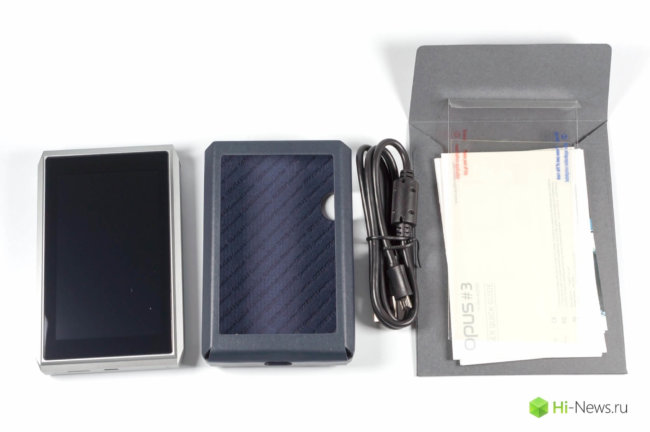
Design and management
If there was a prize for the most eye-catching design, the creators of OPUS#3 clearly would fall into her short list. Unusual, memorable texture of the pyramids that adorn the back panel, correct work with chamfers and bevels — all this creates an unusual appearance, the player obviously will not work with nothing to confuse. Despite the fact that rear panel is made of metallized plastic, the main part of the chassis of the player is aluminum, which is noticeable in both weight and appreciable strength build anything, anywhere no backlash, no squeaks, all neatly fitted and assembled.
Controls a bit. On the left side there are buttons to rewind and play/pause. At the top are the outputs: a regular 3.5 mm and 2.5 mm. balanced By tradition, they can act as line out (theBit even have a tricky wire that provides real balanced connection). On the right side and flush with the back panel put the volume wheel, it’s a bit loose, but the adjustment is satisfactory — everything is clear, with well-marked clicks, without any extra positives. The lower side is occupied by the MicroSD card slot and MicroUSB port, which is traditionally used to restore access to the memory and work as a USB DAC. For the latter, incidentally, meets built-in XMOS, so the function of the DAC here as independent of the CPU. Using the same chip can output sound to the firmware of the player, which should please fans of “absolute correctness”.
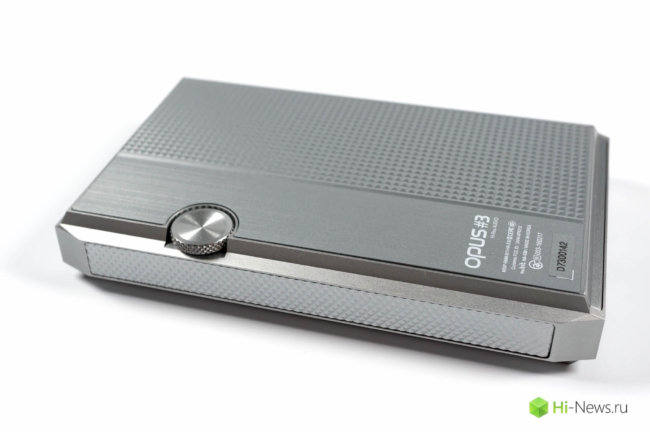
Most of the front panel is touch screen, very good player standards. It remains readable in the sun (although it loses contrast), it has good viewing angles of depression are processed efficiently. About resolution and color reproduction and I wouldn’t say this all too well.
One of the strengths of players from theBit is their firmware. Despite the use of Android 5.1.1, all the “innards” of the OS carefully hidden, even installing third-party applications were not possible.
After loading the user meets playback screen, familiar from other players of the main part is the cover of the current track. According to tradition, the memory of the player is already uploaded 3 tracks of the Korean project Jazzotheque (I have to like them). In the upper left corner is a button to access the media library, there are expected view the tracks, artists, albums, folders and playlists. In General, the navigation was made very easy and very convenient, all optimized for convenient operation with the fingers.
If you perform a swipe down from the top of the screen, open shutter settings: brightness, wifi, BT, EQ and so on. Then by clicking on the button with the gear icon to get to main settings screen. Everything is quite familiar with the Android OS, and, perhaps, explanations require just a couple of points, not to tell again about the three-level switch gain, sleep timer and gapless playback. In the same settings menu mode the USB DAC (hint: for out of it you need to click on the circle in the center of the screen).
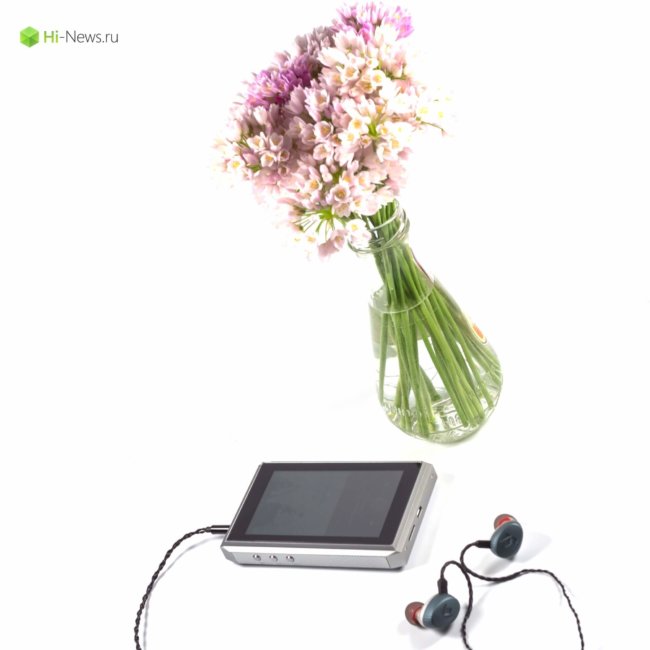
The first interesting item of the menu is Output — DSP Mode. Here you can choose what mode of sound output will be used by the player: via I2S interface via DAC or XMOS chip, which, as you remember, also available on Board. Anyone can try both and choose the one that will like more.
Another interesting menu item is the Streaming. In theBit effectively solved the problem of supporting streaming. If you remember, in a review of OPUS#2, I wrote that it is unclear — why do we need to phone Wi-Fi, because its only use was the firmware update. Now in the firmware of the company have the opportunity to add their software, and even two programs they installed out of the box. The first is a client of Spotify: it is all exactly as expected. The second player that is very similar to basic, but with support for access files via DLNA/UPnP. Moreover, the player may, if necessary, and play the role of the stores/render, it allows you to build any wireless transmission scheme of the sound. I think in the future network player submenu normal, as the real need to have both programs on the device, probably not.
You may want to add your program to the player, for this we need to download the APK, throw it on a player in the Downloads folder and in the menu Streaming, click on the plus button. This opens a list of available packages and you can select to install.
I also note that I recently updated the firmware for OPUS#2, there was added the same capabilities.
In General, the firmware is stable, reliable, no stuttering or gaps in it is not detected. While working close to the claimed and is 8 hours and 15 minutes (the standard test in FLAC 44.1/16 bit Audio MEE P1 in the role of the load, mid gain, volume 70), charging time — 4 hours 10 minutes. In the player mode is deep sleep, so battery device consumes sparingly. A small minus is that when playing with the screen off the power saving mode after some time it disables the hardware buttons to control playback, therefore the player must first “Wake up” by pressing the power button.
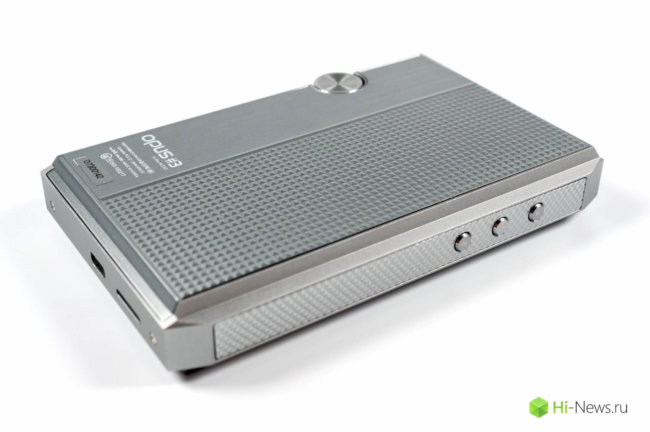
Sound
To listen to the device used the following headphones: iBasso IT03, 99 Meze Classics, Audio Zenith PMx2, Noble Kaiser Encore, Campfire Audio Andromeda, 64 Audio U12, HUM Pristine and others.
In theBit well aware that to release a few players with similar sound and close enough price — the idea is not particularly reasonable, so they decided to make OPUS#3 to more flavoring compared to its flagship at number two and, in fact, not lost. The third Opus offers exactly what many people just appreciate the flow of the players: a little warm, punchy sound with accentuated emotions.
The bass is very very slightly accented to create a light effect pritenennoe in the flow. Hlestkost slightly reduced to make the sound more massive, but it’s done very carefully, without pronounced bias. Player well the texture and separates the instruments the low frequency range. Subbas present, but it is slightly removed quantitatively, so as not to create unnecessary turbidity in the bass.
The midrange is transparent and a little the underlined emotion. Sometimes it seems that the player specifically selects and adds vocals to the singers emotions in the voice. OPUS#3 is very nice to relive the classic bluesmen, everyone’s favorite jazz singers, raucous rockers — they seem to shed about 20 years and returned at the time of maturity and the maximum height of his powers. Of course, player good resolution, but no breaks in focus and not trying to pull from the records all micronance, on the contrary, it can even hide some flaws. The imaginary stage is very wide, but without additional inflation, the depth a little more than average, but not such a record as width. The separation plans are very good, especially with the emphasis on vocals.
RF in General is good, quite detailed and with high-quality attenuation. Sometimes OPUS over the top with attacks, and because of that treble sound a little more sharply conceived, but a good selection of records and earphone allows you to never encounter. Also, this problem is less pronounced in DSP mode, XMOS, however, the difference is small, and it can be blamed on the placebo effect.
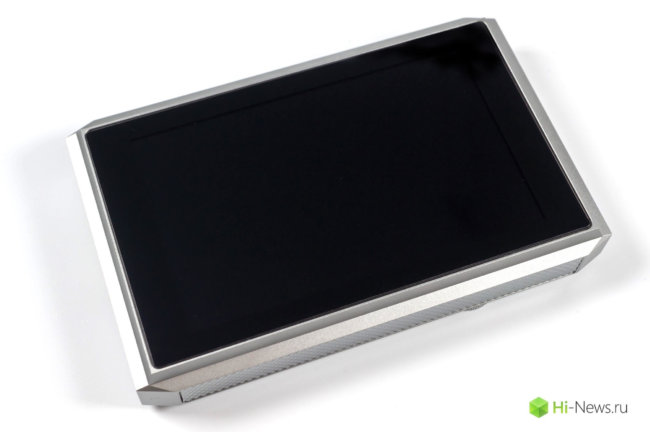
Well, where do without multiple comparisons.
theBit OPUS#1. The first OPUS captivates with its love to inflate an imaginary scene that makes the sound is spectacular, but not always natural, plus it is distinguished neutral and a little dry feed. The Troika is not trying to exaggerate the volume, passing it the way it is, and overall, the player sounds a bit darker and more energized. Plus OPUS#3 darker background and thus a better definition of the individual sounds.
theBit OPUS#2. The main objective of the flagship is to play without embellishment, but not boring, and “second” does well. He focuses less emotion (though it expresses what is in the record perfect), he has deeper bass and better separation of the layers, as it naturally developed in detail and HF. Though in fact the difference between #2 and #3 are small (less than between #3 and #1), but the feeling of “step forward” is present.
iBasso DX200. In some ways the opposite of OPUS#3 — neutral, absolutely not dyed with maximum resolution and detail. The main problem of the iBasso player — wild picky to the quality of the recording. Opus in this respect, more tolerant, and its presentation is more emotional and slightly less resolution.
Fiio X7+AM2. In General, the supply of these players is possible with a little stretch to call a similar, but in fact there is a marked difference of emphasis — player from Fiio is slightly less sharp on the treble and a little easier in mid-range.
Fiio X5-3. Not really a competitor to OPUS#3, but since the model is popular, can’t ignore it. Newbie from Fiio is just an even greater bias in the direction that the Opus only indicated more warmth in the sound, more relaxed treble, well, everything else that is needed to create a “comfortable” supply.
Compatibility
In the tradition of the player is made not the most powerful, however, this is a reasonable approach and allow the battery to save, and the extra noise not to hear. Power OPUS#3 is enough for any IEM and most of the full-size headphones, and there is no noise even in sensitive models like Andromeda CA. Of all my vast Arsenal is better with this player showed LAM-7 from Ambient Acoustics and Noble Kaiser Encore. From the more affordable models traditionally good hybrids from Dunu and entertaining new Audio Periodic Beryllium. To avoid the same with the OPUS#3 need headphones with accented SC and HF.
Genre player is quite versatile, although his energetic flow is especially good on the Blues, classic rock, instrumental music. The quality of the recording it moderately critical where on 7 points on a 10-point scale, the main thing that on the record everything was fine with the HF-range.
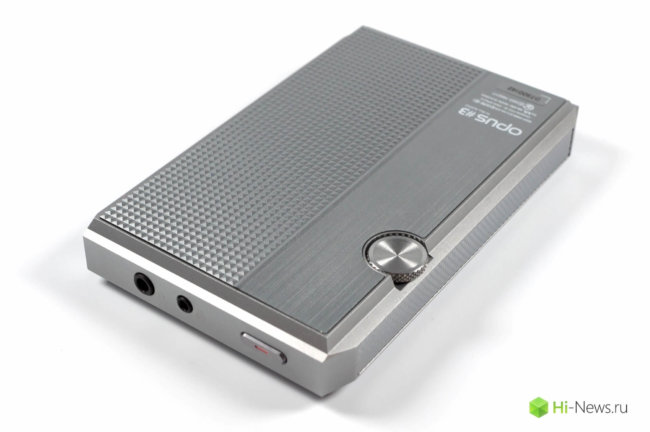
Traditionally, several tracks as example
The Beatles — Being for the Benefit of Mr. Kite! If you still didn’t released the anniversary re-release of “Sergeant pepper’s” dedicated to the 50th anniversary of the album. The whole album actually brought again from scratch, and I can say that the result was excellent: it allows more time to make sure that very few musicians in recent history can even be compared with The Beatles. By the way, true fans will appreciate the 6-disc edition, which includes a variety of Studio outtakes, allowing to understand the birth process of the album. Of course, with a good player in the person of OPUS#3 these records sound even better, and the added emotions have more.
Marillion — White Paper. Long gone are the days when Marillion gave a second birth to the genre of prog-rock, has died down debate on the topic whether it is possible to consider Marillion group with Hogarth? The composition of the audience in ‘ 89, has proved its worth and showed amazing bands in the genre stability. Was on the way team UPS like “Anoraknophobia” and drop type of “Afraid of Sunlight”, but F. E. A. R was so good that immediately can go to the list of the best works of the group. It has everything: beautiful melodies, emotional, despite the age of Hogarth, vocal, interesting idea… only Remains to add OPUS#3 and a good pair of headphones and enjoy returning during the Misplaced Childhood and Clutching at Straws, noting, however, the fact that the group was calm, like most of her fans.
James Brown — I’ll Go Crazy (Live at the Apollo). “The godfather of soul” gives a master class live performances and socializing with the crowd, no wonder this album is considered one of the best live records of all time. Be sure to listen to it even if you can’t stand live performances, in this case it is just an example of how to work with the public and with the OPUS#3 immersion in the atmosphere 1962 is even better. I never cease to wonder how it was possible to make such a high quality recording with such primitive equipment, but the fact remains, even now rare live albums can boast this level of equipment and material.
Insights
On the one hand, I’d love to avoid the trivial speed and, on the other theBit has done an excellent player and definitely positioned it into the correct market segment. I would say that OPUS’s are currently the main rival of the current “king of the mountain” Astell&Kern.
A review of theBit player OPUS#3 — bull’s-eye again
Pavel Dmitriev